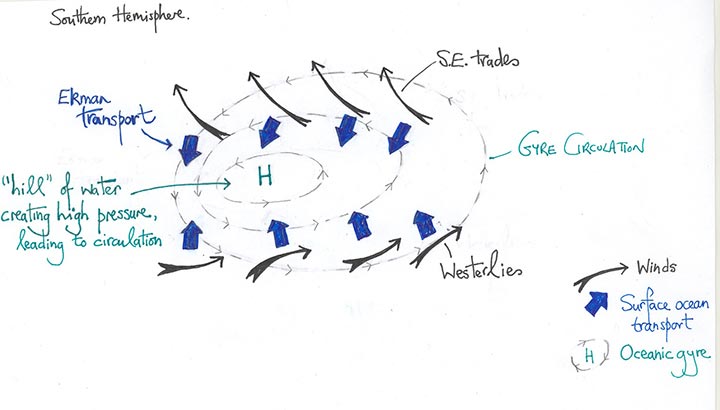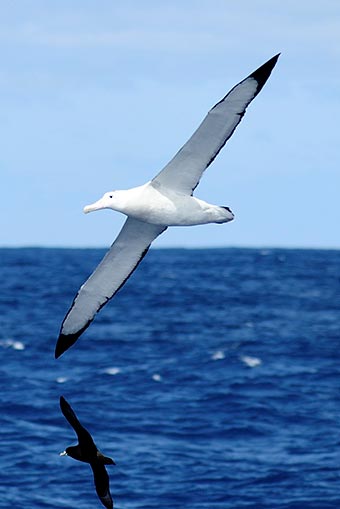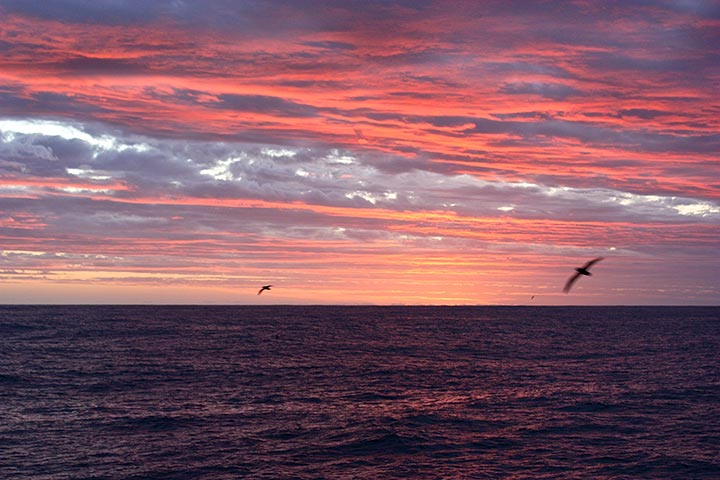
Mooring ops complete, a little time on our hands, let’s take a quick look back at the early days of oceanography before all this gee-whiz technology when guys were per force thinking about the ocean from a theoretical perspective. On either side of 1900, Scandinavians formed the vanguard of oceanographic thought before anyone considered oceanography an independent science. A Norwegian, Vagn Walfrid Ekman (1874-1954), started from the assumption that all oceans are alike in certain fundamental ways.
First, all oceans are subject to winds blowing over their surfaces. And second, all oceans are situated on a rapidly rotating sphere, Earth. It must follow, then, that all oceans behave in similar ways due to physical laws applied to both.
So to remove all those pesky real-world variables, Ekman conceived an abstract ocean, infinitely wide, no continents in the way, no bottom. Then he blew an abstract wind over his pure ocean in order to learn—and describe mathematically—how wind-driven currents behave on our rapidly rotating sphere. Ekman demonstrated that water does not flow directly downwind. Instead, water is directed 90 degrees to the right of the wind in the Northern Hemisphere and to the left in the Southern Hemisphere due to the effect—the Coriolis effect—of Earth’s rotation.
This, Ekman transport, was the first step toward explaining why those subtropical gyres we’ve been talking so much about exist. No one doubted that they did. Mariners had discovered most of them centuries before Ekman was born. Columbus discovered the North Atlantic’s gyre, recognizing that where there was wind, there would also be current. But mariners didn’t need to explain the gyres; that’s what oceanographers do.

Harold Sverdrup, fellow Norwegian, director of Scripps Institution of Oceanography from 1936 to 1948, took the next step by re-inserting continents into Ekman’s infinite ocean, thereby “closing” the basin. In a closed basin, Sverdrup found, the winds can cause water to accumulate in (or near) the center of the basins. Here’s how: In the Indian Ocean, for instance, the southeast trade winds blowing westward in the tropical latitudes transport water to the left, or southward, of the wind direction. Meanwhile, the prevailing west winds down in the mid-latitudes also transport water to the left, which this time is northward. The net result: Water is ushered inward toward the center of the ocean basin forming a literal hill of water.
A hill of water? What an extraordinary idea. Water isn’t supposed to behave like that; it’s supposed to seek its own level. It isn’t a big hill, only about one meter high. A mariner wouldn’t notice in the vastness of the ocean that he was sailing uphill. But it is there; it is real. The physics—Ekman transport caused by the wind and by Coriolis in a closed basin—required it.
Any sized hill implies slopes, gradients, and gravity wants things, from boulders to skiers, to slide downhill. It’s no different in this oceanic hill. All things being equal, gravity would depress the hill, causing water to flow outward from the crest of the hill describing something like a wagon wheel pattern. But things are not equal. Earth rotates, and that changes the flow path by bending it in one direction of the other depending on the hemisphere. Therefore, the water flows around the hill in a spiral pattern, and this causes the gyre to spin either clockwise or counterclockwise. Ekman transport feeds water into the gyre; gravity tries to take it away; and Coriolis causes it to spin. Equilibrium is attained, a steady state of balance. And there it was—the explanation of why gyres exist in all oceans. This had—and still has—significant ramifications for modern-day thinkers and observers of the ocean which we’ll get to tomorrow, unless the approaching heavy weather makes it impossible to type.











